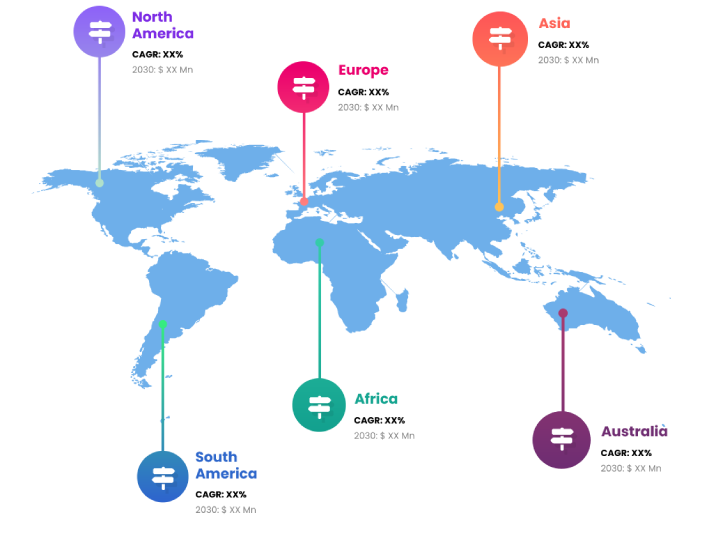
The use of high-speed cameras has been on the rise in many different sectors, including medicine, transportation, the food and drink industry, and consumer electronics. Diagnostics, analysis, preventative maintenance, and repairs of machinery are just a few of the many jobs that can benefit from their use. Significant regional growth is expected to be driven by the industrial and automotive sectors in India, China, and Japan, which are expected to integrate robotics and computer vision skills more extensively.
To capture events or motion at ultra-high speeds, high-speed cameras offer improved features such higher frame rates and increased resolution compared to traditional digital cameras. Their powers allow them to analyze and capture items that are unnoticeable to the human sight. Frame rate, resolution, sensor size, memory capacity, image processors, and ancillary components like fans, cooling systems, and different semiconductor elements are some of the many factors that determine the quality of these cameras. Many different kinds of high-speed cameras are available, each with its own unique set of specifications. You may find them with frame rates ranging from zero to billions of frames per second, and with resolutions ranging from one megapixel to several billion.
In order to record and capture events that happen at extremely fast speeds, a specialized imaging device called a high-speed camera is utilized. By collecting a substantially higher number of frames per second (FPS), high-speed cameras are able to record motion with remarkable clarity and detail, in contrast to traditional cameras. These cameras can capture objects or processes moving at high speeds since their frame rates are customizable, often ranging from several hundred to several thousand frames per second. Scientific research, engineering, manufacturing, sports analysis, and entertainment are just a few of the many businesses that make use of high-speed cameras to record and examine fast-paced events in slow motion that the human eye cannot perceive.
In order to record rapid motion with great temporal resolution, high-speed cameras use sophisticated technologies. They use high-performance image sensors that can capture images at extremely fast frame rates, like charge-coupled devices (CCDs) or complementary metal-oxide-semiconductor (CMOS) technology. These sensors take in light, transform it into digital signals, and then the camera processes and stores the data. Thanks to its high frame rate, the high-speed camera can record breathtaking slow-motion footage, making it perfect for imaging tasks requiring a rapid response.
Now that high-performance infrared cameras are available, they can meet the varied and demanding demands of thermal imaging. These cameras can now detect spectra in the shortwave, midwave, and longwave bands, among others. Alternately, they can be ordered in dual-band configurations, which gives users the freedom to select the particular spectrum bands that work best for their particular needs.
Even the most basic high-speed cameras can take thousands of frames in the same amount of time as standard video cameras, which only manage 24 to 60 frames per second. A complete setup including necessary components including a camera controller, specialist optics, LED lights for accuracy, and specific software for analysis and management of the entire process is required to achieve optimal functioning. The extensive infrastructure required for high-speed photography usually comes with a hefty price tag, with estimates ranging up to about USD 150,000.
The rising need for high-speed cameras is one factor propelling the market for these cameras forward. Industrial inspection, scientific research, sports analysis, and entertainment are just a few of the many uses for high-speed cameras. Thanks to technological developments, high-speed cameras are now more accessible and affordable than ever before, expanding their application across numerous sectors.
The market is being propelled by the increasing need for high-speed cameras in scientific research and industrial inspection. Automobile, aerospace, and pharmaceutical industries are just a few that can benefit from high-speed cameras' ability to record intricate details during fast-paced operations and events. The High-Speed Camera market has been experiencing a notable increase in its CAGR over the past few years due to many aspects associated with these cameras.
Report Coverage
Global High Speed Camera research report categorizes the market for global based on various segments and regions, forecasts revenue growth, and analyzes trends in each submarket. Global High Speed Camera report analyses the key growth drivers, opportunities, and challenges influencing the global market. Recent market developments and High Speed Camera competitive strategies such as expansion, product launch and development, partnership, merger, and acquisition have been included to draw the competitive landscape in the market. The report strategically identifies and profiles the key High Speed Camera market players and analyses their core competencies in each global market sub-segments.
| REPORT ATTRIBUTES | DETAILS |
|---|---|
| Study Period | 2017-2031 |
| Base Year | 2024 |
| Forecast Period | 2024-2031 |
| Historical Period | 2017-2021 |
| Unit | Value (USD Billion) |
| Key Companies Profiled | Motion Capture Technologies, WEISSCAM GmbH, Fastec Imaging, DEL Imaging, Olympus Corporation, iX Cameras, Photron, Vision Research Inc. (AMETEK Inc.), Mikrotron GmbH, nac Image Technology |
| Segments Covered | • By Product |
| Customization Scope | Free report customization (equivalent to up to 3 analyst working days) with purchase. Addition or alteration to country, regional & segment scope |
Key Points Covered in the Report
- Market Revenue of High Speed Camera Market from 2021 to 2031.
- Market Forecast for High Speed Camera Market from 2021 to 2031.
- Regional Market Share and Revenue from 2021 to 2031.
- Country Market share within region from 2021 to 2031.
- Key Type and Application Revenue and forecast.
- Company Market Share Analysis, High Speed Camera competitive scenario, ranking, and detailed company
profiles. - Market driver, restraints, and detailed COVID-19 impact on High Speed Camera
Market
Competitive Environment:
The research provides an accurate study of the major organisations and companies operating in the global High Speed Camera market, along with a comparative evaluation based on their product portfolios, corporate summaries, geographic reach, business plans, High Speed Camera market shares in specific segments, and SWOT analyses. A detailed analysis of the firms' recent news and developments, such as product development, inventions, joint ventures, partnerships, mergers and acquisitions, strategic alliances, and other activities, is also included in the study. This makes it possible to assess the level of market competition as a whole.
List of Major Market Participants
Motion Capture Technologies, WEISSCAM GmbH, Fastec Imaging, DEL Imaging, Olympus Corporation, iX Cameras, Photron, Vision Research Inc. (AMETEK Inc.), Mikrotron GmbH, nac Image Technology
Primary Target Market
- Market Players of High Speed Camera
- Investors
- End-users
- Government Authorities
- Consulting And Research Firm
- Venture capitalists
- Third-party knowledge providers
- Value-Added Resellers (VARs)
Market Segment:
This study forecasts global, regional, and country revenue from 2019 to 2031. INFINITIVE DATA EXPERT has segmented the global High Speed Camera market based on the below-mentioned segments:
Global High Speed Camera Market, By Component
Image Sensors
Processors
Lens
Memory
Fans and Cooling
Others
Global High Speed Camera market, By Application
Automotive and Transportation
Consumer Electronics
Aerospace and Defense
Healthcare
Media and Entertainment
Others
Global High Speed Camera Market, By Spectrum
Infrared
X-Ray
Visible RGB
Global High Speed Camera market, Regional Analysis
- Europe: Germany, Uk, France, Italy, Spain, Russia, Rest of Europe
- The Asia Pacific: China,Japan,India,South Korea,Australia,Rest of Asia Pacific
- South America: Brazil, Argentina, Rest of South America
- Middle East & Africa: UAE, Saudi Arabia, Qatar, South Africa, Rest of Middle East & Africa
You will get in-depth and extensive high speed camera market market research and competitor analysis for your business to help you develop more profound insights into the high speed camera market Market.
Through INFINITIVE Data Expert is a professional Market Research services, I will identify the high speed camera market market size, demand & opportunities, growth rate, and target audience with a comprehensive analysis of your competitors.



